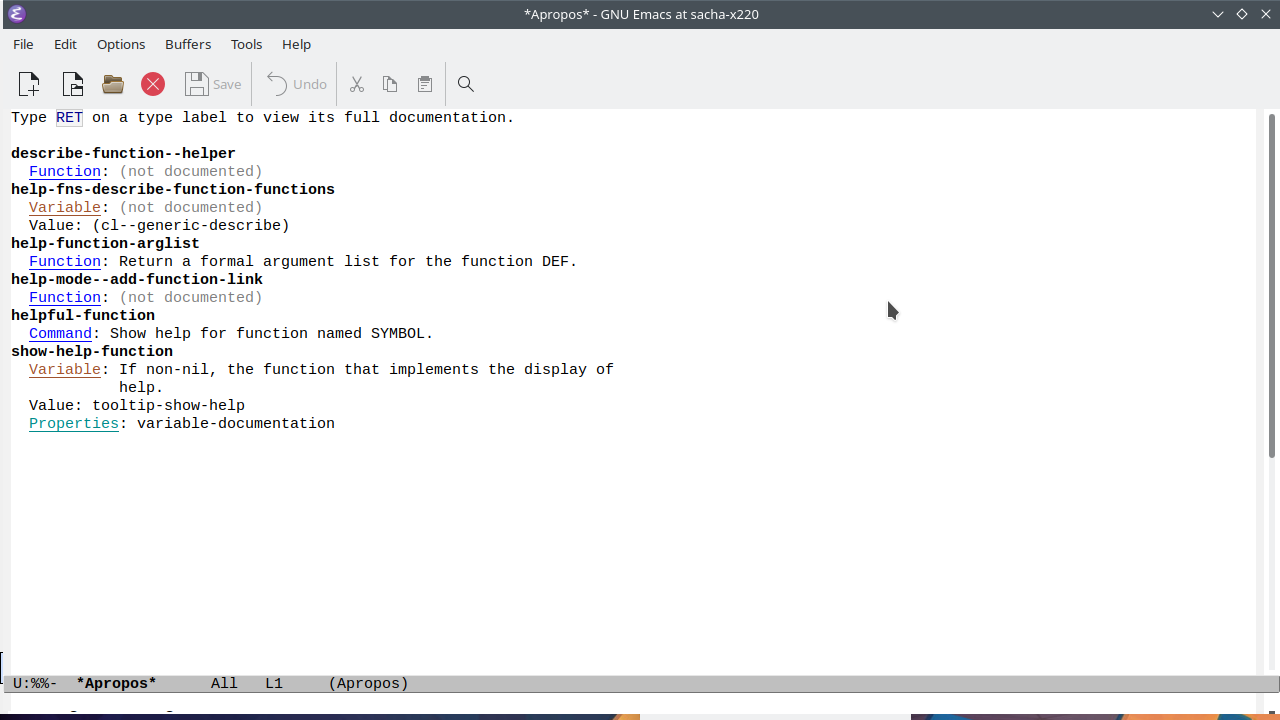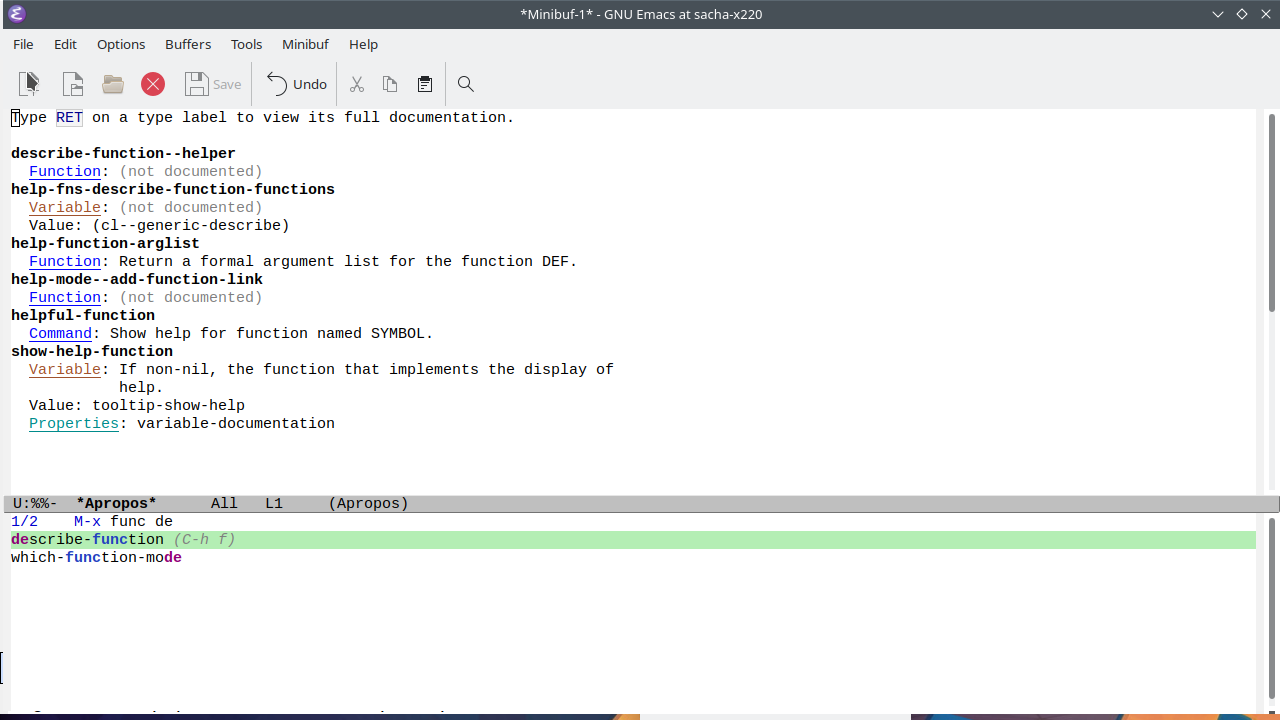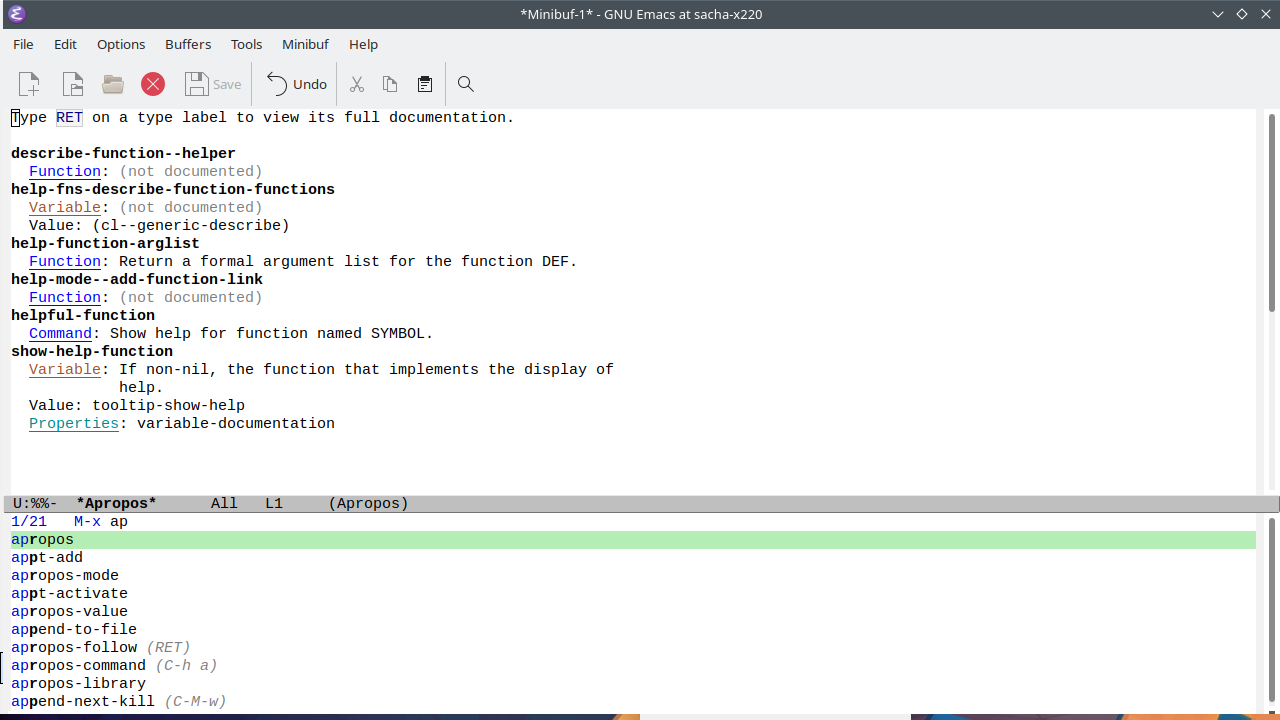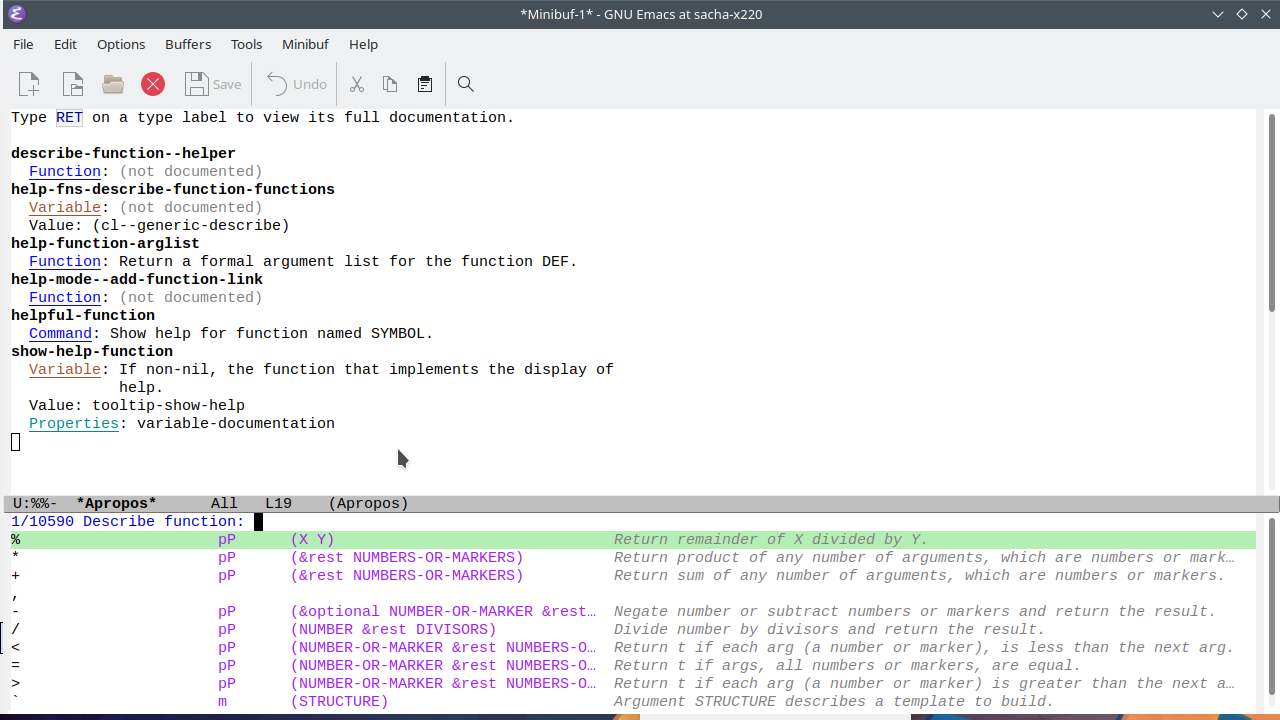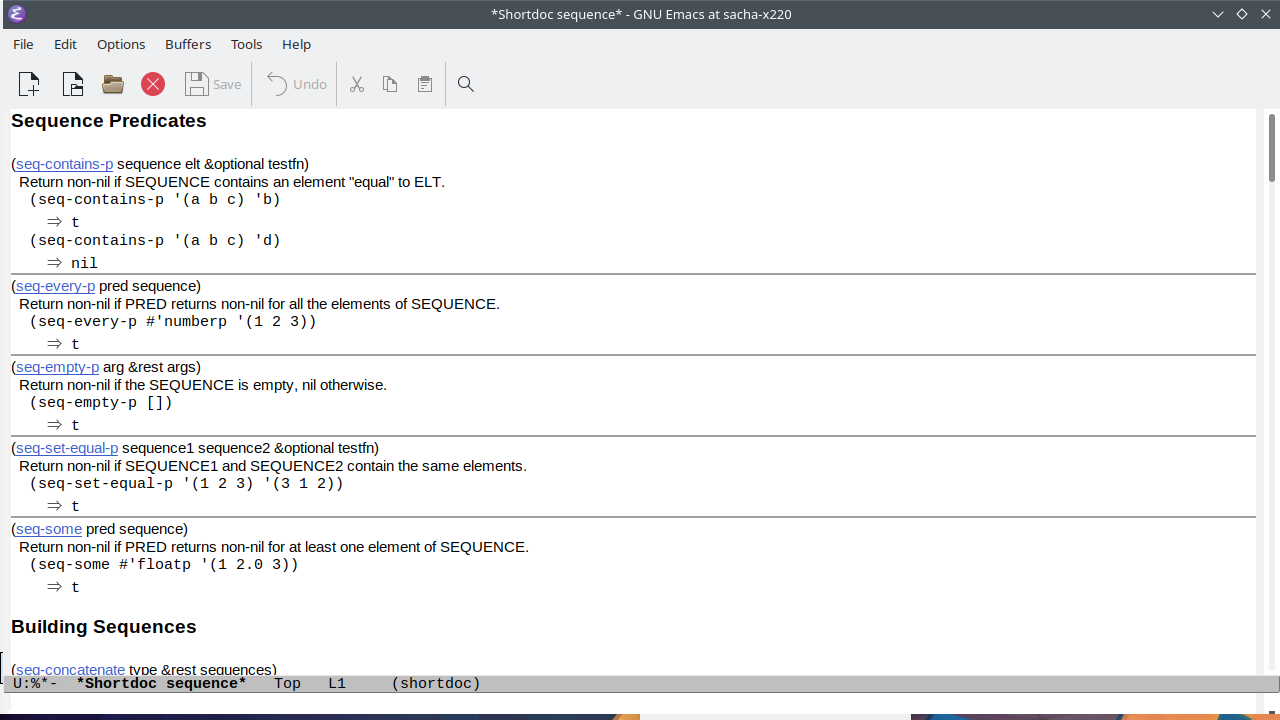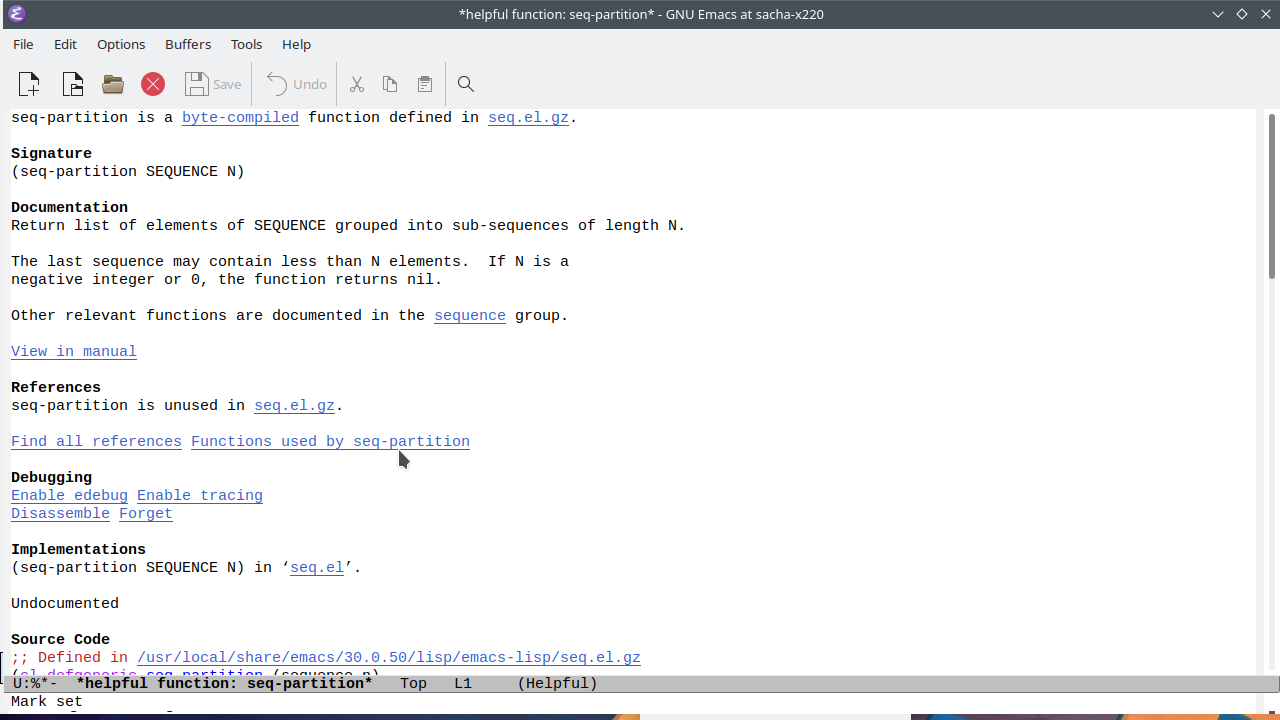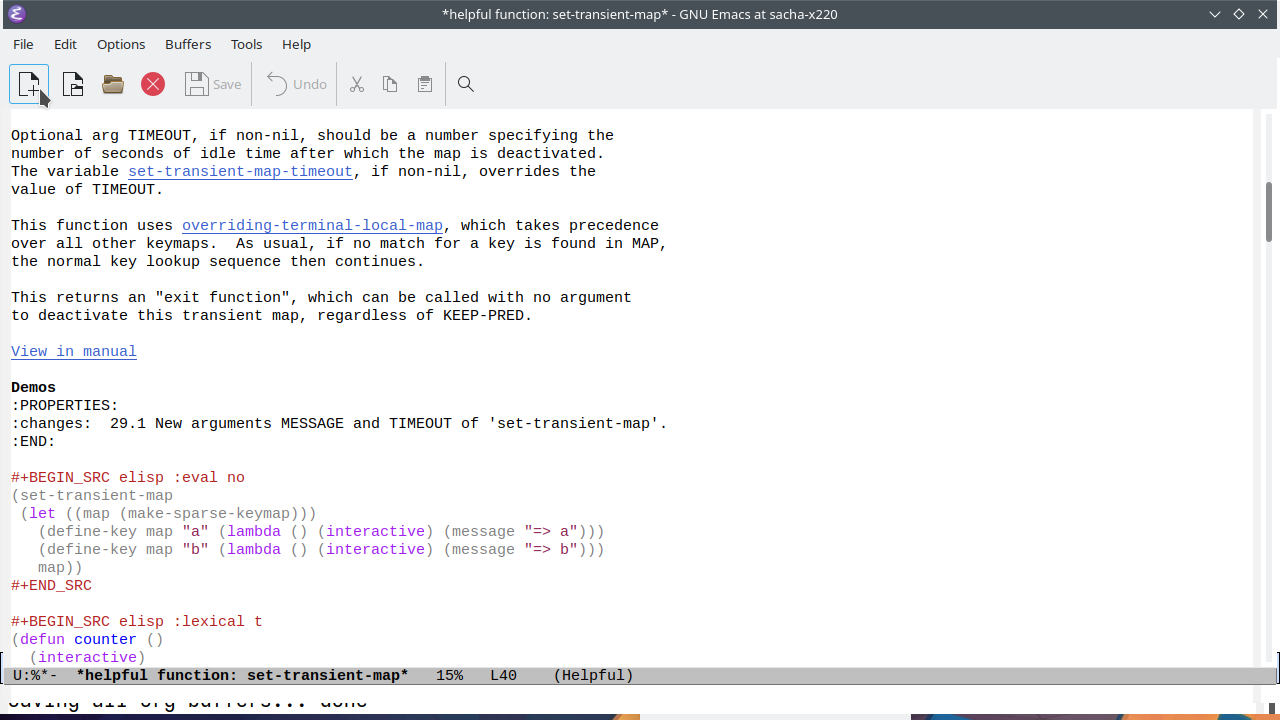2024-01-29 Emacs news
| emacs, emacs-news- Upcoming events:
- Emacs Berlin (virtual, in English) https://emacs-berlin.org/ Wed Jan 31 0930 America/Vancouver - 1130 America/Chicago - 1230 America/Toronto - 1730 Etc/GMT - 1830 Europe/Berlin - 2300 Asia/Kolkata – Thu Feb 1 0130 Asia/Singapore
- Emacs users group Slovenia (in person) https://emacs.si/ Thu Feb 1 1900 Europe/Berlin
- M-x Research: TBA https://m-x-research.github.io/ Fri Feb 2 0800 America/Vancouver - 1000 America/Chicago - 1100 America/Toronto - 1600 Etc/GMT - 1700 Europe/Berlin - 2130 Asia/Kolkata – Sat Feb 3 0000 Asia/Singapore
- Emacs Paris: S: Emacs workshop in Paris (IRL - Octo) https://emacs-doctor.com/ Tue Feb 6 1800 Europe/Paris
- EmacsATX: Emacs Social https://www.meetup.com/emacsatx/events/298320311/ Wed Feb 7 1630 America/Vancouver - 1830 America/Chicago - 1930 America/Toronto – Thu Feb 8 0030 Etc/GMT - 0130 Europe/Berlin - 0600 Asia/Kolkata - 0830 Asia/Singapore
- Atelier Emacs Montpellier (in person) https://lebib.org/date/atelier-emacs Fri Feb 9 1800 Europe/Paris
- Emacs configuration:
- A quick guide to directory-local (or project-specific) variables in Emacs (2016, Irreal)
- Reinstalling Emacs Packages | Emacs Redux (2020, Irreal)
- Switching to the meow modal editing system from evil (2021, lobste.rs)
- Protesilaos Stavrou: Emacs: define prefix/leader key (nested key maps) (23:18 YouTube, Reddit, Irreal)
- Why is my Emacs Slow? (Reddit)
- Debugging Emacs
- mms/mms-emacs - Codeberg.org (@mms@emacs.ch)
- Emacs Lisp:
- Mike Zamansky: Learning Elisp 17 - a thesaurus mode (16:36 YouTube, Reddit, Irreal)
- Customizing 'ebib' (and 'citar') behaviour by locally overriding a function throughout a dynamic extent - cl-letf (not cl-flet)
- ANNOUNCE: ert-results.el - Rapidly manipulate views in Emacs Regression Test results and source buffers
- emacs-datetime
- Xah Talk Show Ep533 Emacs Lisp Normalize YouTube Url, Open All File Paths, How to Choose a Mouse (50:05)
- efetch.el - an emacs fetch tool (02:12) - display system information
- Lección 6: Imagenes | Curso de UI Emacs Lisp
- Lección 7: Arquitectura | Curso de UI Emacs Lisp
- Appearance:
- I Just Wanted Emacs to Look Nice — Using 24-Bit Color in Terminals | Chad Austin (HN, lobste.rs)
- Emacs Notes: How I used ct (= color tools) APIs to choose background highlighting colors for use with hi-lock library OR Pick colors in a quantitative way using ct (= color tools) APIs
- Show off you org-mode eye candies (also non-Org)
- Background transparency for MacOS (Cocoa) emacs (Reddit)
- Navigation:
- Hyperbole:
- Dired:
- Writing:
- Org Mode:
- How I Wrote my Book in Emacs + Org - YouTube (@mms@emacs.ch)
- org-mode Ui changes · GitHub (screenshots, Reddit)
- Yi Tang: Learn in Emacs - Building Up Vocabulary
- 2023年のorg-mode活用と今後の抱負 - takeokunn's blog (@kaneuchi@mstdn.jp)
- Screenshot of the day: Shopping with Emacs + Org mode + Orgzly
- Note-taking on the go: Capturing messages and images sent via Jami in Org mode
- Webmention Comments - Nothing Is Simple (@AblatedSprocket@emacs.ch)
- William Denton: Basic citations in Org (Part 5)
- Evolution calendars in Org Mode's agenda
- Fast, Async LaTeX Previews in Org Mode (Reddit)
- OrgMeetup notes (@yantar92@emacs.ch)
- Logseq from an Emacs Org-mode perspective
- Org development:
- ob-python: Set Python shell in Org edit buffer
- lisp/ox-icalendar.el: Add time-to-live functionality to ox-icalendar
- ob-R, ob-julia: Do not force-start session in Org Src buffers
- org-babel-tangle: Do not allow tangling into self
- ox-icalendar: Add support for multi-line SUMMARY, LOCATION, and DESCRIPTION
- org-attach-store-link-p: Change default value to 'attached
- Obsolete org-switch-to-buffer-other-window and org-no-popups
- org-fold: Honor :extend face property in folded headings/blocks/drawers
- Denote:
- Completion:
- Coding:
- sky blue trades | Effortless Emacs Multiple Major Modes with Polymode
- Compile with Confidence: A Deep Dive into Compiling Code with Emacs (15:46, Reddit)
- LSP in Emacs setup (@xgqt@emacs.ch)
- editing rust in emacs with LSP (07:59)
- Estandarizar commits en Magit con commitizen
- How Jane Street Does Code Review - Jane Street (2017, lobste.rs)
- Web:
- Mail, news, and chat:
- AI:
- Fun:
- Community:
- Other:
- Appreciation for flush-lines and keep-lines (@choanmusic@mstdn.social)
- Zachary Kanfer: Auto-revert PDFs in Emacs
- Quickly open SSH sessions in Emacs
- Michael Fogleman: Emacs can keep in touch (2015)
- streak: A minor mode for Emacs to track a streak.
- emacs-tmux-pane: Fuse emacs windows with tmux panes.
- Sacha Chua: 2024-01-21 Yay Emacs: copy link, Spookfox + Org Babel, choosing what to hack on, SVG highlighting, ical
- Curious about Emacs? Sightseeing twisted wonders (08:59)
- Пробую Emacs после Vim (почти пианист) (27:01)
- Emacs local meetup discussion playlist in Tamil (@goldayan@clj.social)
- Full Linux implementation with proper support for EXWM and Emacs on mobile phones (see 12:55 in video for Org mode) (Reddit)
- Emacs development:
- emacs-devel:
- Code snippets/template consolidation and potential improvements
- Re: Possible minibuffer completion enhancements
- Installing cond* in core
- help-gnu-emacs: Idea for `other-window-prefix' command, running anything in the other window (there's already an other-window-prefix, but maybe it needs extending?)
- xt-mouse.el: Obey `mouse-wheel-*-event` variables (bug#68698)
- Support setting umask symbolically in Eshell
- Support a local repo as URL in 'treesit-language-source-alist'
- Allow users to opt out of following Windows Dark mode
- Calc parses fractions written using U+2044 FRACTION SLASH
- Add new option to 'register-use-preview'
- Add option Info-url-alist
- Optionally avoid extending 'completion-at-point-functions'
- ; Minor improvements in 'visual-wrap-prefix-mode'
- Import ELPA package adaptive-wrap as visual-wrap
- Add support for running commands via Eshell's "env" command
- emacs-devel:
Links from reddit.com/r/emacs, r/orgmode, r/spacemacs, r/planetemacs, Hacker News, lobste.rs, kbin, programming.dev, lemmy, planet.emacslife.com, YouTube, the Emacs NEWS file, Emacs Calendar, and emacs-devel. Thanks to Andrés Ramírez for emacs-devel links. Do you have an Emacs-related link or announcement? Please e-mail me at sacha@sachachua.com. Thank you!

